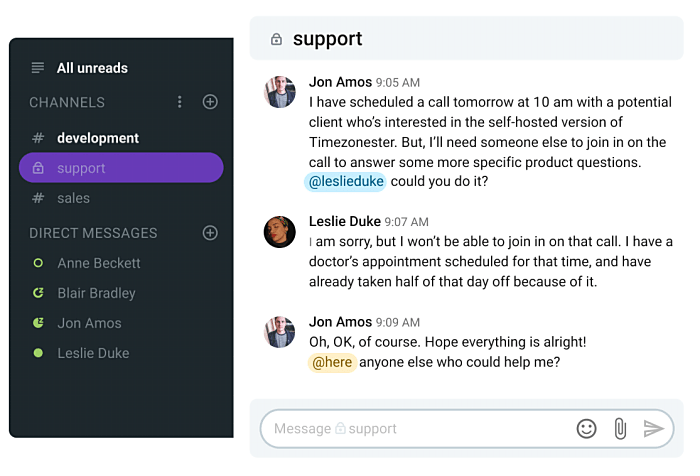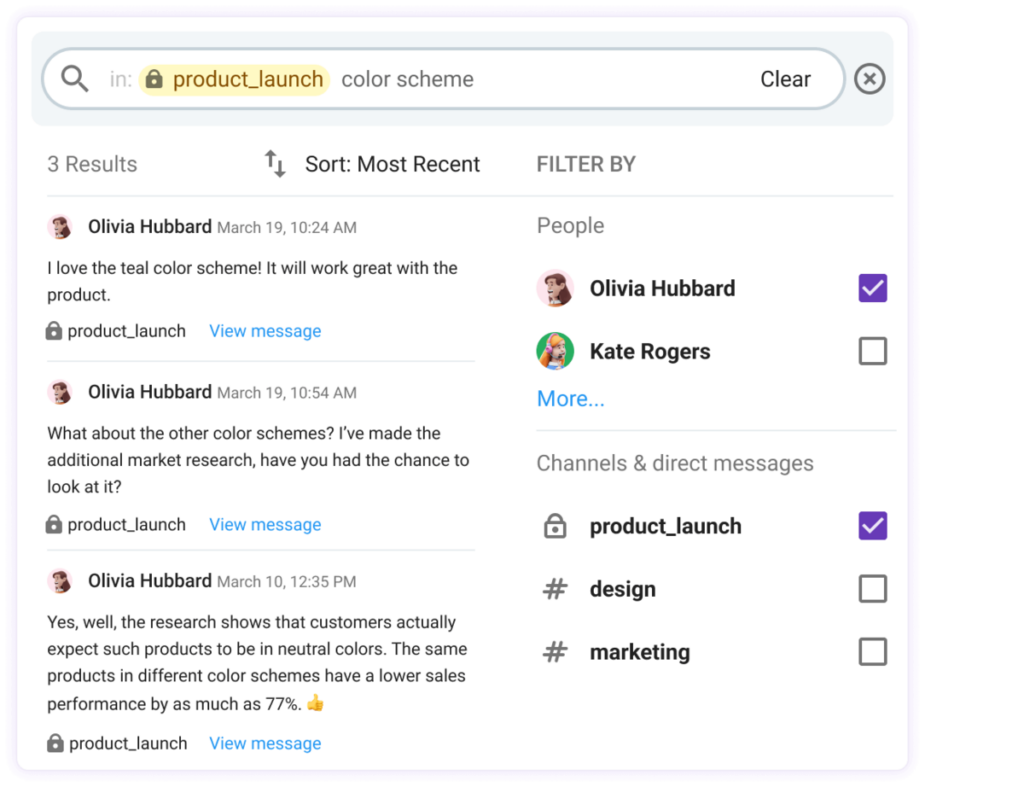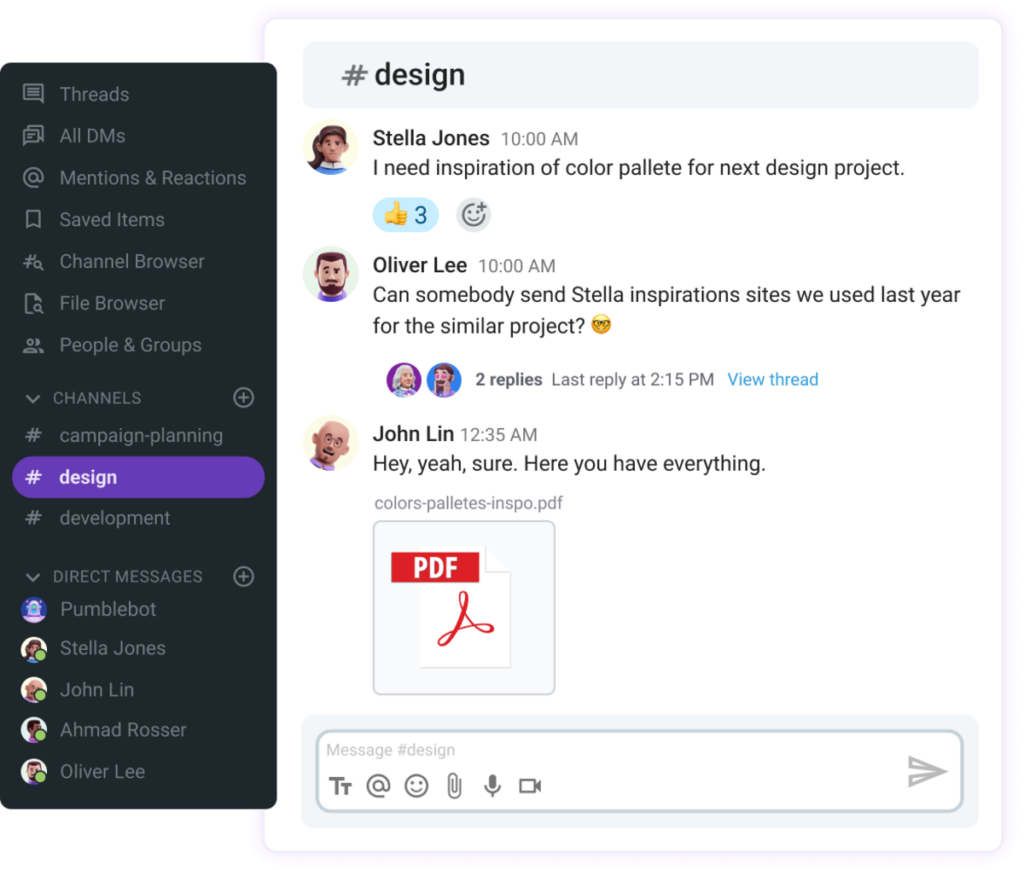They say, “Ask a silly question, and you’ll get a silly answer,” but what do you get when you answer the same question for the 15th time this week? Most definitely not a quiet time.
Answering repetitive questions might seem like a proper problem-solving strategy. But, this method is nothing more than a path of least resistance.
If your team typically lives in the dark and does not have access to the necessary data, the problem could be more serious than it appears. This issue could be a symptom of an underlying disease – inadequate information sharing.
Instead of taking time out of your busy schedule for damage control, help your team build the habit of sharing information. To ensure nobody has to dig around to stay in the loop, let’s go into some practical tips for information sharing. The advice can help you tailor your information flow and deliver a clear message. Apart from that, it guarantees you never have to go around in circles with the same old questions again.
Table of Contents
The root of all evil — holding information back
If you have ever had to sort out a team misunderstanding, you are already aware of the importance of a properly communicated message. From heated arguments to increased frustration levels, an unclear message seems to be the root cause of all your team’s troubles.
When communication among team members is not transparent enough, look at your sharing system. Maybe none of the employees are keeping secrets knowingly. But, the lack of communication with affiliated departments may have formed team silos. Whichever the cause, recognizing that your team members feel like outsiders or sweep important information under a rug is a good place to start.
Advantages of sharing information at the workplace
Nowadays, businesses have become less hierarchical and more-team oriented. Due to these changes, none of the team members should own exclusive rights to workplace information.
If happiness is only real when shared, as the old saying goes, information is worth more than gold when equally distributed. Let’s shed some light on the advantages of equal distribution of information for your team’s communication processes.
Effective information sharing ensures transparency
A prerequisite for effective team communication is a free flow of information. However, retaining the culture of cascading information from senior management to each team member doesn’t do wonders in a present business environment. With the rise of the remote and hybrid workspace triggered by the pandemic, the way we share information has also transformed. Nowadays, we share information by joining a video conference or typing in a communication tool. Instead of cascading information, we share it in a symmetrical discussion.
When properly utilized, virtual communication platforms encourage transparent communication more than one-on-one conversations. Sometimes we share the link to a collaborative document. Other times we might pin an announcement to a channel in a team chat app. Whichever the purpose, the tools for sharing information enable us to notify the entire organization in a matter of seconds.
Effective information sharing improves team productivity
Sometimes, team members have to dig around for information. Instead of focusing on the company’s growth, they look for data. Unsurprisingly, their productivity levels drop. According to the newest research from Wakefield Research and Elastic, one in five of the 1000 U.S. knowledge workers surveyed reported that searching for relevant information is their primary problem while working remotely.
Organizing your information across your communication channels could be one of the solutions. This could prevent your team members from wasting time waiting for essential data to show up. Instead of putting projects on hold, employees direct their energy towards proactive work.
Effective information sharing constructs a supportive community
Hand in hand with the increase of dispersed teams goes the sense of isolation and loneliness. Dealing with a flawed process of information sharing on a daily basis could deepen workers’ isolation further. Employees are no longer able to reach out to their colleagues by walking down the hall. In addition, when confused about where to find the relevant data, their sense of belonging to their own team becomes even more endangered.
Initiating the use of information storing and sharing tools could bridge the gap between remote team members. Consider whether all the necessary data is at hand despite the geographical distance. By helping your team members stay connected, the sense of a tight-knit community remains secure.
Challenges of sharing information at the workplace
The habit of hoarding information could be a tough nut to crack, especially when working with remote teams. Flexible working hours could complicate matters further. Some of the team members just follow the habit of logging in later in the day, and this is where the breakdown of the information flow takes over. It’s possible there might not be a cure-all for this breakdown. However, not turning a blind eye to the challenges of sharing information at the workplace is a great starting point. But first, let’s see what these challenges are.
Communication channels prevent information sharing
Retaining information does not always have to be an intentional act. Perhaps your team needs to maneuver through heaps of apps to be able to get in touch with everyone else. Most of the time, the choice of your team’s communication channels has the most impact on their communication process. For example, if you favor email as your primary remote communication channel, it might be a good moment to question your choices. Apart from the usual delays in delivering urgent messages, the very nature of emails poses a threat to valuable information. From spam filters to long lists of recipients, the troubles with emails are neverending.
Before pointing fingers at your team members, always take another look at your communication channels. The whys and wherefores of the inadequate information flow might lie just there.
💡 To learn more about why email may not be the best choice for remote communication within a team, check out our blog post on the subject: Why email is perhaps not the best for remote communication.
The lack of trust blocks the information flow
Without transparent team communication, an atmosphere of distrust quickly arises. Trust is essential for both transparent internal communication and a positive emotional culture in the workplace. A trusting employee will openly share information and be ready to collaborate. But, if under the impression that they are not trusted enough, employees keep information for themselves. Always think about promoting the benefits of information sharing. Incentivizing knowledge distribution is also a great way to encourage team members to share.
Seven tips for sharing information effectively
The lack of an established system for sharing information doesn’t necessarily mean that no relevant facts are being distributed within the organization. However, without proper guidelines, your team members might come up with their own ways of handling data. When everyone in your team follows their own rules for sharing information, the data might be impossible to track down. When this is the case, introducing changes into your information-sharing practice could be long overdue. Let’s go over some actionable tips to help your team cut corners in firing the relevant information off.
Build an effective onboarding process
There’s no perfect moment to start making changes to your information-sharing process. However, the hour you welcome new hires on board could be a suitable one. You could start by making room for internal connections. Assign each new employee a mentor or a work buddy. This will ensure the new hires get quickly acclimated to their new jobs and get all the necessary information right away. A quality onboarding process is a catalyst for an information-sharing culture onset. Apart from that, it will also prevent the new employees from running around in circles for weeks. Think of appointing certain team members to be responsible for responding to questions. This responsibility for providing guidance can shift the employees’ attention towards sharing instead of treasuring data.
Mind your words
Your team could be using the latest and most efficient information-sharing technology. However, if they ignore the basic communication guidelines, the tools could cause more trouble than they are worth. For example, your team members could use department-specific words or abbreviations too often. This method is what’s leading everybody to go back and forth in confusion. Not only is this process time-consuming, but it’s also equal to bad communication manners. If your business communication takes place in a team chat app, always follow the chat etiquette guidelines before sending. This habit will merge the information you are about to share and prevent confusion. Paying attention to the clarity of your words solves the problem of misunderstandings. Apart from that, being coherent facilitates efficient information delivery.
Establish proper channels for sharing information
When misplaced information interferes with everyone’s workflow, reconsider your sharing environment before going down the road of accusations. If you distribute vital data across different platforms, it’s too confusing to keep track of the updates. Information sharing and finding data should be coherent processes. If your main communication channel is a team chat app, select a specific channel for important information. Pumble, for example, lets you create an unlimited number of topic-based public and private channels.

Consider creating a specific channel for keeping your information or sharing announcements. This method allows your data to remain organized without giving up on discussions. For example, when you create a #marketing channel, you give team members from various departments a chance to discuss the marketing projects. Both designers and social media specialists can join a discussion in this channel. But, when you wish an announcement to be visible all the time, opt for creating a #marketing_announcements channel. This separate channel will ensure everyone from the team is up-to-date. The conversations can still go on in the remaining channels, but the number of confused face emojis (😕) will certainly reduce.
Preserve important information
Not every discussion brewing in your communication tool is worthy of attention. However, some announcements are less replaceable than others, and salvaging them would unnecessarily waste resources. Perhaps not every information loss would cause a disaster. But, employees wandering around looking for the said information equals inadequate information-sharing practice. Pinning information links to a channel is a failproof method of keeping your relevant information in one place. You can even pin messages where you share links to essential resources, PDFs, or books and create your team’s knowledge base this way.
Follow information-sharing rules
Keeping the information flow as transparent as possible should ward off potential confusion. But, even though we have developed a habit of always ‘staying on,’ sometimes we still miss important messages. A well-thought-out strategy of sharing could decrease the chances of missing out. If you share an urgent notice in a channel without using mention, your message might not receive the required attention. The same goes for a topic-specific notice without any tags. By using #tags, you speed up your team’s searching for information. With the right strategy, nobody has to message every coworker from the department when looking for data.
Don’t forget informal sharing
Your vacation photos are probably not as high a priority as an update on your product’s newest feature. Yet, there are many benefits to creating an environment for informal content. Participating in casual discussions fosters a tight-knit community, highly needed for establishing trust. So, never question the need for a free flow of discussion in your team chat’s #random channel. These conversations reduce the risk of overlooking crucial data. Apart from that, mountains of GIFs will stop creeping from project-related channels.
Implement special strategies with a multi-generational team
The modern workforce resembles a melting pot of different generations. This situation has posed a new challenge to our communication processes. Namely, Generation X and Millennials dominate the global workforce, accounting for 75% in 2020. However, other generations are present as well — Generation Z represents 24%, whereas Baby Boomers make up 6% of the worldwide workforce. This generational diversity is more than just a year gap. Brought up in different external environments, they all bring different values to the workplace. Their use of technology and the process of communicating varies. Therefore, their differences cannot be swept aside. Managing a multi-generational team implies working our way through different media. Let’s look into the different methods of sharing information to assist you in keeping a multi-generational team up-to-date.
Boomers prefer phone calls
Baby boomers are prominent and valuable team members even today. Although Statista’s report shows that they comprise a small percentage of the global workforce, their communication style should not be neglected. Often labeled as unable to adapt to technological changes, Boomers favor face-to-face communication. However, emails and phone calls can be an excellent substitute for in-person contact. Phone calls are usually reserved for urgent issues in the fast-evolving nature of the modern workplace. Yet, Boomers could greatly benefit from giving them a ring every now and then. Using technology as an asset in improving productivity, Boomers prefer to consume information independent from the software.
Opt for instant messages with Millennials and Gen-Z
Both Millennials and Generation Z prefer instantaneous information-sharing tools. Studies confirm that their consumption of technology from an early age has significantly restructured their brains so that they process information differently than older generations. The research shows that they are prone to multitasking and collaborating in a fast-paced environment. Since they can process information quickly, they pay more attention to the notifications coming from a team chat app. Therefore, however busy they are, mentioning them in a channel is a good way of grabbing their attention.

Send an email to Gen X
It might be difficult to overlook the disadvantages email brings to remote communication. However, certain information-sharing situations require its use. This is especially the case when a need to share information with Generation X arises. Their preferred style of communication being the asynchronous method, this generation both consumes and shares information via email. The moment Generation X entered the workforce, the dominant communication channel was email. Studies show that Gen X attempts to maintain a strong work/life balance. This trait could explain their preference for receiving emails. Although email might not ensure the swiftness of your information-sharing process, compose a new email every once in a while. This will guarantee that Generation X interprets your message in time.
Choose visuals for younger team members
Visual content, such as videos or infographics can quickly grab everyone’s attention. This is particularly true when your information is time-sensitive. Yet, digital natives might be the first ones to notice your visuals. Relying on graphics and multitasking, Millennials and Generation Z prefer visuals over text. Apart from that, research has shown that both generations have a short attention span, living in an 8-second world. So, if it takes longer to interpret your message, both generations could simply ignore it. Instead, choose the brevity visual content has to offer. Graphics and videos ensure your message arrives at both the right place and the right time.
Sharing information is easy with Pumble
Say goodbye to repetitive questions and misunderstandings with Pumble — a team messaging app with powerful knowledge-sharing features.
In Pumble, you can easily search through files and messages, with filters to narrow your search.
And, considering that you have full access to message history even in the free plan, you will always be able to find what you’re looking for.

Additionally, sharing documents and files is easy and fast. You can send:
- Images,
- Videos,
- Links,
- Documents, and
- Any other files.
Pumble lets you send files of any size and upload multiple files at once by drag-and-drop.

You can also pin important messages in channels and keep them in the Pinned section for future reference.
With all the powerful knowledge-sharing features in Pumble, you’ll never miss out on important information and your team will always be in the loop.




